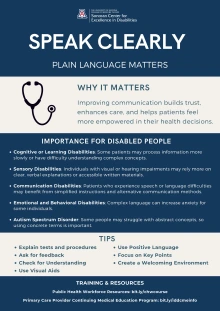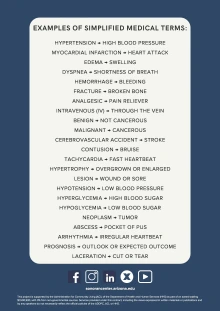The CACTI Blog: Importance of Accessibility for IDD Communities in Healthcare Settings

By Megan Sullivan, 2024-2025 Interdisciplinary Approach to Disability in Professional Practice Intern
As an intern at the Sonoran Center for Excellence in Disabilities, I had the opportunity to work on projects that support people with disabilities in meaningful and practical ways. Helping people has always been something that I am passionate about. However, as I began my internship search, I wasn’t entirely sure what I wanted. After coming across the Sonoran Center and reading about their mission, I knew I had found the right fit. Once I started my internship, I quickly realized that there is still a lot more work to do to make healthcare more accessible for people with intellectual and developmental disabilities (IDD).
I was lucky to work on two projects during my time here, the Pregnancy and Parenting Project and the Trauma-Informed Care Project. The Pregnancy and Parenting Project focuses on creating accessible resources for people with disabilities who are expecting a child, already parenting, or thinking about starting a family. I helped build a resource list and designed materials that can also be used by healthcare providers, community workers, and clinics to make their care more inclusive and supportive of individuals with IDD. The Trauma-Informed Care Project involved helping gather information to create a survey that looks at how well workplaces understand and apply trauma-informed care practices. The survey is meant to find out if employees are being trained to recognize trauma and respond in ways that support healing. Through both of these projects, I learned so much about the challenges people with IDD face and why it’s so important to create tools and resources that actually work for their unique needs.
People with disabilities deserve to have the same opportunities to grow their families and receive compassionate healthcare. However, many individuals with IDD face barriers when it comes to understanding information about pregnancy, parenting, or recovering from trauma. Medical information is often hard to understand, especially when it’s full of technical language or not adapted for different learning styles. There’s also a lack of inclusive materials available for healthcare workers and doctors to learn how to make their own offices or practices accessible and inclusive. Through my internship, I worked to address some of these barriers by creating easy-to-understand resources that can be used by individuals with disabilities, their families, and healthcare providers. These materials support people in making informed choices and help providers communicate in ways that are respectful, accessible, and trauma-informed.

Creating these resources helped me grow both personally and professionally. I became more aware of how language can affect someone’s ability to understand their care and feel comfortable with their provider. I also gained skills in health communication, accessibility, and community engagement. It was inspiring to learn from people in the field who are passionate about disability rights and inclusion, and it encouraged me to continue advocating for more accessible and equitable healthcare systems in my future career. My preceptor, Celina Urquidez, worked with me throughout my time as an intern and helped guide me every step of the way.

One of the resources that I created was a flyer for doctors’ offices that explains why it's important to use simple language and avoid medical jargon when speaking to patients. The flyer is designed to help healthcare providers understand that clear communication can make a big difference in helping people with disabilities feel safe, respected, and informed. It includes tips on how to explain medical information in everyday language, why it is helpful for people with various disabilities and a list of simplified medical terms that doctors or providers can use, creating a welcoming environment for all patients.
My work was guided by research into the real-life experiences of people with disabilities and their interactions with healthcare systems. I attended seminars, explored existing resources, and worked with my mentors at the Sonoran Center to make sure the resources I created reflected what the community truly needs. This process taught me how to turn academic research into real-world tools that can help people. It also showed me the importance of centering the voices of individuals with disabilities in all aspects of resource development. This internship has shown me how powerful accessible information can be. When people have the tools and knowledge they need, they’re more confident, more empowered, and better able to advocate for themselves. I’m grateful for the chance to support this important work and hope to continue making a difference in the lives of others.
The CACTI Blog features the voices of our interdisciplinary trainees and Community Advisory Council members as they highlight diverse images of people with disabilities and provide community information and advocacy on disability issues. Check Out The CACTI Blog
